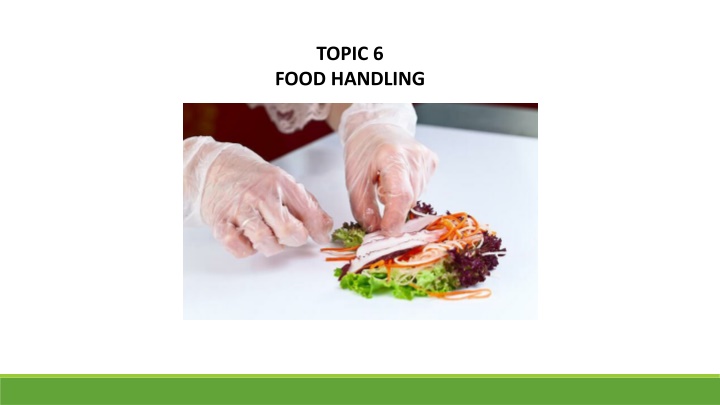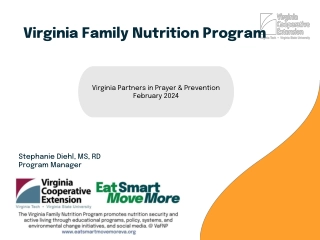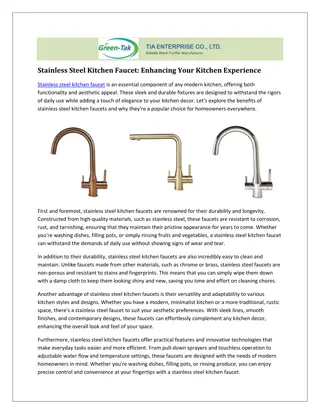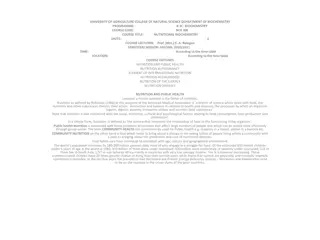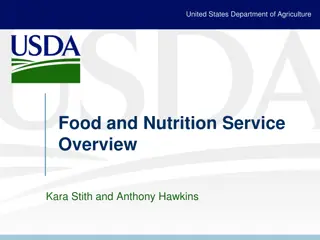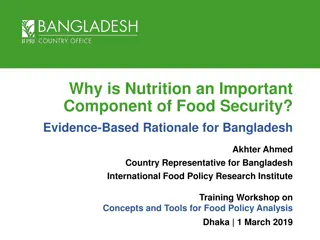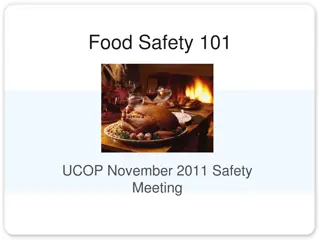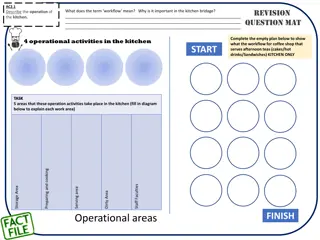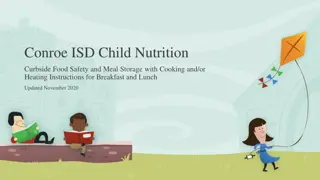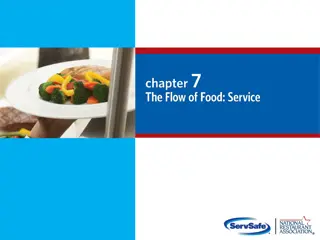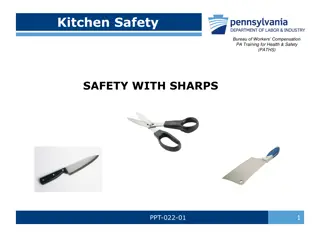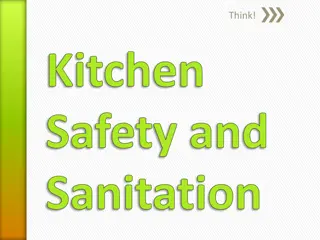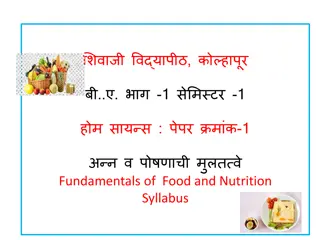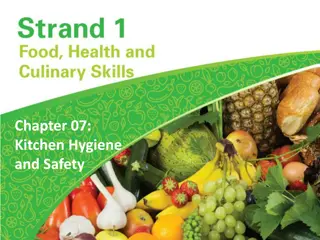Kitchen Safety, Nutrition, and Food Handling Guidelines
Explore essential topics such as food handling practices, kitchen safety rules, basic nutrition insights, and tools for culinary workshops. Discover the importance of proper utensil use, accident prevention in the kitchen, and the impact of malnutrition on health. Learn about the food pyramid, foods necessary for the body, and the risks associated with excessive consumption of fats, salt, and carbohydrates.
Download Presentation

Please find below an Image/Link to download the presentation.
The content on the website is provided AS IS for your information and personal use only. It may not be sold, licensed, or shared on other websites without obtaining consent from the author.If you encounter any issues during the download, it is possible that the publisher has removed the file from their server.
You are allowed to download the files provided on this website for personal or commercial use, subject to the condition that they are used lawfully. All files are the property of their respective owners.
The content on the website is provided AS IS for your information and personal use only. It may not be sold, licensed, or shared on other websites without obtaining consent from the author.
E N D
Presentation Transcript
TOPIC 6 FOOD HANDLING
Types of Accidents in the Home/Kitchen (a) Accidents Caused by Tools (b) Accidents During Cooking (i) (ii) Bumping into large tools such as the kitchen bench, pot handles and kettle spouts because students are running or playing around in the workshop. (iii) Falling down because of slippery floors Contact with sharp tools which are not kept in a safe place. (i) (ii) Contact with hot water. (iii) Contact with hot materials when hot food is spilled. (iv) Contact with hot appliances like oven. (v) Burnt by gas fire. (vi) Contacts with grinding tools. (vii) Falling due to slippery floors. (viii)Inhalation of cooking gas. (ix) Electrical shock. Contact with knife or other sharp tools.
FOOD AND BASIC NUTRITION FOOD PYRAMID CHART
Among the problems caused by excessive nutrition such as fat, salt and carbohydrates in the body are: (a) Hypertension; (b) Stress; (c) Asthma; (d) Heart disease; (e) Diabetes; (f) Nerve problems; (g) Stroke; (h) Kidney disease; and (i) Cancer
Maintaining Cleanliness (a) Personal Hygiene (i) Wash hands with soap and clean water before preparing food. (ii) Use a clean apron and cap. (iii) Wear clean clothes. (iv) When preparing food, avoid spitting and sneezing. (b) Premise Cleanliness (i) The kitchen and dining room must be clean and tidy. (ii) Rubbish should be wrapped and thrown into a dustbin with a lid. (iii) Eliminate insects and pests. (iv) Wipe spilled food immediately. (c) Equipment Cleanliness (i) Utensils used to prepare, cook, serve, store and pack must be clean. (ii) Wash used utensils with clean water. (iii) Kitchen utensils should be stored on a clean rack. (iv) Kitchen cloths must always be washed. (d) Food Cleanliness (i) When serving food, use spoons, forks, chopsticks or food holders. (ii) Food should be eaten as soon as it is cooked. (iii) Use food covers or muslin cloths to cover the food. (iv) Eat easily contaminated food first.
